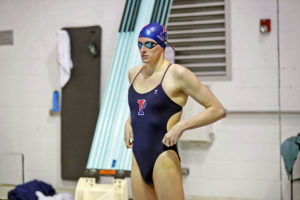It looked like a man punching a woman. Algeria’s Imane Khelif, at 5’10”, is only two inches taller than Italy’s Angela Carini; but watching the two in the ring of the women’s 66kg boxing at the Olympics, the difference between them was painfully obvious. Khelif’s hard, rangy body had more reach, and more power. After taking two ferocious blows, Carini abandoned the bout, receiving the final result in devastated tears.
It looked like a man punching a woman because, according to the International Boxing Association, Khelif is not a woman. In 2023, Khelif was disqualified from the World Boxing Championships along with Taiwan’s Lin Yu-ting — “a result of their failure to meet the eligibility criteria for participating in the women’s competition”. This decision was based, not on testosterone levels, but on “a separate and recognised test, whereby the specifics remain confidential”.
A Russian-language statement (the IBA is Russian-led) put it more bluntly: “Based on the results of DNA tests, we identified a number of athletes who tried to deceive their colleagues and pretended to be women. Based on the results of the tests, it was proven that they have XY chromosomes.” Lin did not appeal, while Khelif initiated an appeal and then withdrew it, meaning that in both cases, the judgement became legally binding.
But not binding on the Olympics, which withdrew recognition from the IBA earlier this year over multiple concerns over governance. That means the International Olympic Committee (IOC) is free to apply its own rules on sex categories in sport. IOC spokesperson Mark Adams warned against starting a “witch hunt… These are regular athletes who have competed for many years in boxing; they are entirely eligible and they are women on their passports.”
Which would be a totally acceptable way to classify sex, if the fight was between passports, rather than two bone-and-sinew bodies. Khelif is apparently not female, in a category designed for female athletes. And while the IOC has been keen to emphasise that this controversy is wholly unrelated to the contentious matter of trans women in sport, that is an impossible separation to maintain. The question of how sex should be defined — by chromosomes, by hormone levels or by legal marker on a passport — is the heart of the argument over inclusion.
What happened in the ring in Paris is a riposte to all the absurd claims that sex is immaterial to athletic performance. Witness, for example, the writers Rebecca Jordan-Young and Katrina Karkazis, who argued in a 2012 New York Times op-ed for “letting go of the idea that the ultimate goal of a fair policy is to protect the ‘purity’ of women’s competitions”. If inclusion is the objective, “then sex-segregated competition is just one of many possible options, and in many cases it might not be the best one”.
And anyway, doesn’t the enforcement of sex categories simply re-instil bad old stereotypes about female weakness and vulnerability? That, at least, is what the American Civil Liberties Union (ACLU) believes. “Excluding women who are trans hurts all women,” says the organisation’s self-identified factsheet on sports. “It invites gender policing that could subject any woman to invasive tests or accusations of being ‘too masculine’ or ‘too good’ at their sport to be a ‘real’ woman.” History professor Johanna Mellis even suggested in The Guardian that women’s sports categories might have been invented by men “to limit our athletic success and opportunities by reinforcing sexist notions of cisgender girls and women as the ‘weaker, slower sex’”.
From there, it’s a short distance to travel to the often-repeated claim that, as an article in LGBTQ+ magazine Them put it, sex differences should be viewed “much like the way we view Michael Phelps’s abnormal wingspan”. Athletes are, by definition, physical exceptions. A male person who has been legally recognised as female is simply another example of biological variation, and — claimed sports correspondent Jonathan Liew (now of The Guardian, but then writing in The Independent) — perhaps one to be celebrated: he claimed that, “in a way, it would be inspiring” if trans women came to dominate women’s sport.
So far, chromosomes notwithstanding, Khelif has not dominated women’s boxing. XY chromosomes notwithstanding, Khelif lost in the quarter-final of the Tokyo Olympics to Kellie Harrington of Ireland, who went on to take the gold: BBC 5 Live boxing analyst Steve Bunce pointed out that Khelif is “not a devastating puncher” and has ever only achieved five stoppages. The implication, perhaps, is that Carini could have fought on, and maybe even beaten Khelif if she’d been good enough. Maybe so.
But genetically male athletes do not only become a problem in women’s sport when they’re successful. Every XY athlete “included” means an XX athlete pushed out. In combat or collision sports, they also imperil the female athletes they compete against. According to the organisation Women in Sport, male athletes have (on average) 40-50% greater upper limb strength and 12kg more skeletal muscle mass when compared to age-matched female athletes at any given body weight.
A technically accomplished woman might win a fight against a man, but the risk of injury she takes in the process is immense. So Casini had every right to weigh her own safety. After the bout, she said: “It could have been the match of a lifetime, but I had to preserve my life as well in that moment.” Boxing is inherently dangerous — but there is a very different level of exposure in agreeing to be punched by another woman, and agreeing to be punched by a man.
This is the difference that proponents of eliminating sex categories in sport cannot acknowledge. Some, like Liew, may tacitly accept it while being fundamentally unconcerned about what that would mean in practice for women in sport — perhaps because they consider women’s sport to be fundamentally unserious. (“Sometimes we forget that there are bigger things than sport,” wrote Liew in his Independent piece, which is not an observation he ever appears to have made about men’s sport.)
But for others, particularly for women, and perhaps most particularly for women who are not actively involved in physical pursuits, there is a kind of hope in this denialism. They would like to believe that women’s physical disadvantage compared to men really is a purely, or at least largely, social phenomenon. They recognise women’s inferior status, and they understand that this is tied to the body; but they believe that the body is the cause of the inferiority, and so the body becomes politically inconvenient. They choose instead a tactful fiction of physiological equality — if not in the here and now, then in the inclusive Jerusalem to come.
The female body can, certainly, do more than the male authorities who run sports have historically liked to believe: there is a long and weird tradition of claiming that exercise will cause a woman’s uterus to fall out. Given fair access to training and competition (something which is still very far from assured), women do become faster, stronger, more aggressive. I know this from personal experience. I started powerlifting in my late thirties, and in my forties can pull weights I once thought cartoonishly huge. But I also know that the same weights pulled by a man would be much less impressive, which is why comparing myself to men tells me nothing at all about my progression.
Mixed-sex sports simply lead to exceptional women being forced out by mediocre men: brute strength besting accomplishment. The Olympics’ failure to protect women’s sport is a tragedy for female athletes, but it also makes a travesty of the competition overall. What should be a celebration of excellence becomes, through the IOC’s contempt for fairness and safety in women’s sport, the elevation of the mediocre. After decades of obfuscation and inanity over gender and sport, the truth of it all became clear in an entirely unnecessary meeting: between an apparently male fist and a female face.
Disclaimer
Some of the posts we share are controversial and we do not necessarily agree with them in the whole extend. Sometimes we agree with the content or part of it but we do not agree with the narration or language. Nevertheless we find them somehow interesting, valuable and/or informative or we share them, because we strongly believe in freedom of speech, free press and journalism. We strongly encourage you to have a critical approach to all the content, do your own research and analysis to build your own opinion.
We would be glad to have your feedback.
Source: UnHerd Read the original article here: https://unherd.com/



